|
I had sent some of my older fleeces away earlier this year to the Dakota Fibre Mill for processing. As I'm sure is the same with many of you, I have more fleeces than I can process on my own. This was my first time sending fleeces away and my friend Nicole has had fibre processed at this mill in the past (she even took them down for me!) I sent of my very first fleece which was from a Corriedale sheep named Viv. I bought this one from Val Fiddler of Woolly Wool of the West when we took our Wool Judging course together in 2012. I also used this fleece in many of my classes as a great example of Corriedale. I didn't want it to continue to sit in my basement and now I can spin it up! It. Is. So. Wonderful! Val's fleeces are always exceptional and this one was no surprise. I also had a giant Rambouillet that I bought at the Drake Sheep Show & Sale several years ago. It was from a Manitoba Producer named Graham Rannie who I've not met on a bunch of occasions art different wool shows. He also won Grand Champion with his Rambouillet at the All Canada Classic in 2015. I knew a fleece of this size would be too much for me on my own and it is so fine, I was a bit scared I would wreck it so off that one went. The 3rd fleece I had processed is a Romney X.. and to be quite honest, I can't remember where I got that one but wow is it squishy. Overall I am so incredibly happy with the quality of the fibre and the care that went into making the roving. I paid $145 for the 3 fleeces which came out to 5 bags full. I will start spinning and weighting as I go. These will be sweaters FOR ME! They are so nice and light now without the lanolin, sweat, VM, etc. So light in fact that I dumped the entire Romney fleece out into the snow without even realizing - oops hah I often get asked which mills will process single fleeces and besides the Dakota Fibre Mill you can now also process your fleeces at Long Way Homestead in Manitoba! Anna will be the next person I send my wool to (and I do have more of course). really am happy that I could have each fleece kept separate. Especially for others like me who have special fleeces that they want to use for a specific project. I can't wait to show you how it all comes out!
0 Comments
This year I taught both levels 1 & 2 of Wool Judging at the Manitoba Fibre Fest. It was an intensive 3 days of looking at the good and bad in many different breeds and fleeces. At the end of level 2 there was a written exam as well as a practical judging portion. Every student did exceptional! Above are examples of some of the very beautiful fleeces which were excellent examples of their breeds. This fleece on the other hand is a VERY BAD example. It weighs 26 lbs!! This fleece came from a medium breed with the locks well over a foot long. It is a bit hard to see in the pictures but it also show canary stain which is unscorable. This fleece shows bad animal health, bad animal care and it should NOT be supported in any way. Locks WAY too long for breed type is not a luxury. It is animal abuse. This case was different from Shrek in the fact that this sheep did not escape and hide in the mountains, it was living on a farm not getting sheared. Yearly shearing is important for the sheep's health. The sheep that carried this 26 lbs of extra wool would have been very uncomfortable. It's skin would not be able to breath and bacteria grew rampant. Please keep this in mind when you see overgrown fleeces/lock online or in the field. Most of our 2 classes were here for the certificate award ceremony. Many thanks to Gerry (3rd from left) who coordinated the course as well as sourcing all the fleeces and providing an insight that was immeasurable to class participants. Much thanks also to Wool Growers who provided learning materials, funding and backed the courses and provided the certificates.
If you are ever interested in wool judging keep an eye out for upcoming courses with the Manitoba Fibre Fest. Blue Hills Fibre Fest was on June 9th - which was also World Wide Knit In Public Day. Jeremy and I spent the day in Carberry with the always amazing Manitoba Fibre Community. If you haven't visited a fibre fest before, you MUST add this one to your list. It may be smaller on scale but it is overflowing with amazing vendors, classes, fleeces and pie! This was my booth all set up and ready to go. Aside from our regular items we also had Straw into Gold kits and Cog Yarns hand dyed skeins for purchase. I am always overwhelmed at the generous support from the people in Manitoba. You all made my day so bright and one I can say I honestly enjoyed. Looking forward to next year already Wool ShowI was very happy to judge the wool show this year. There were 16 fleeces in all and wow (!) most scored pretty high. Manitoba wool is exceptional. Here are the first place winners as well as some of my favourites. My phone was a bit greasy so sorry about the shiny pictures hah! More SpinningI had a few new skeins to bring with me. Watch for an update in my Etsy shop very soon, were I will be listing the skeins I have. You can also find some at The Naked Sheep Yarn & Fibre Emporium. Cake!If you are ever in Winnipeg then you MUST go to Baked Expectations. The cakes are so unbelievable, you will need to decide on a few to go as well. Jeremy had the Tia Maria torte. Next time I might get the Red Velvet cake and likely another cheesecake or chocolate cream pie. Also, take it from me - the hot chocolate is one of the best! My HaulI did well. I could have bought soooo much more. The quality of vendors was outstanding and such a great variety. A new knitting wedge bag from Dragon Fibre Bags, project bag, sock yarn and t-shirt from Long Way Homestead, Sock yarn from The Sheep-ish Spinner, darning mushroom from Natural Knot Woods, french spindle from Homespun Tools and a cork wedge pouch, cedar/grapefruit handmade soap and merino hand dyed fibre from Last Dance Ranch.
Oh I love it all!! I wanted to send out a big Thank you to those who stopped by the Etsy SK Winter Market on Dec 2nd at the U of R. This was the 3rd sale I organized at this venue and it still is my favourite. I had a good day talking to a lot of great people and meeting new vendors as well. I bought some yarn from Midknit Cravings; some to make another Aura shawl and a sock appetizer (pics below). I also got some fat quarters from So Sweet Quilts which I am planning on making some quilted mug rugs. A hand blown glass tumbler from Glassy Eyed and some beautiful notecards from Sparkling Medusa. Thanks to my chronic pain, after the sale I slept from 9 pm on Sat to 2:15 pm on Monday.
I also finished 2 pairs of socks using the Straight Up Socks pattern again. One pair was for my dad's birthday and I used good ol Kroy sock yarn. I really like knitting for him because he truly appreciates it. When I gave them to him (as he was going out the door) he cam back in, took off his boots, ripped off his socks he was wearing and put my handmade socks on. I love that.  My other pair I made in only a couple days using some new yarn from Midknit Cravings. It is one of their appetizers as I mentioned above. The colourway's I used were Bad Mood Monday and Wine Not! You get 50 g of the main colour and 20 g of a contrast colour. I was waffling between doing an afterthought heel, or maybe just tube socks but thought I would try to see how far I could get with the Straight Up Socks recipe and was left with 5g of the main colour and 6g of the contrast so I could have been ok. I just love them! Can't wait to make more.  I also sewed a brand new dress!! It is the Fen Dress from Fancy Tiger Crafts and I highly recommend it! For starters it comes in a bunch of sizes and it has POCKETS! You can also make a shirt. I love the hem line and it is SO comfortable. I will be making more of these as well. I also just bought the Metamorphic Dress by Sew Liberated so it will be my next sewing project for my handmade wardrobe. It also has pockets and it is reversible. I have restocked on Unicorn Power Scour in my Etsy shop - Professional Grade Wool Wash for cleaning your fleeces & raw fibre. 16 oz bottles
Use Power Scour for wool washing and wool cleaning fiber with heavier burdens of grease, wax, suint, dirt and clay, typically found in sheep, goat and bison fibers. Use lower temperatures, 40°-50°C (104-122°F), for fibers such as Cashmere, Alpaca, Bison ,etc. Use higher temperatures, 50°-55°C (122-131°F), for fibers with more oil/wax or oils (sheep, etc.) This is the product I use to wash all my fleeces because it is the BEST! I will be bringing it with me to Blue Hills Fibre Festival next weekend May 5 - 7 was the Regina Weavers & Spinners Guild Fibre Shindig. It was full of fibre enthusiasts, vendors and a great line up of workshops. I was lucky enough to teach my Fleece to Finish class to a group of fellow members. Some participants had sheep of their own while others wanted to learn more about processing fleeces and what to look for when buying wool at an auction. We went over both judging cars and 3 breeds together and then students judged their own fleeces. It was a great afternoon that just flew by. Thanks to everyone who came out, I love talking about wool and was happy to share my knowledge.
Here are a few more pics taken by Sparkling Medusa Creative Services I have sent off 15 skeins of yarn to Elaine at Field and Fable in Swift Current. Yay Saskatchewan! I have quite a mix of fibres from alpaca, to BFL and Merino, Falkland, Bamboo and even Cashmere. Below are some of the skeins included in the box. Field and Fable is such a beautiful shop filled with handmade items from local artists. Just take a look at her website (which you can also buy from) and see all the beautiful creations she has in store.
 For those that follow me on Instagram or Facebook, know I was helping Gerry shear her sheep this past weekend. I am working on a blog post about how exciting that was, but in the meantime, I also wanted to share a post I wrote for another site I work on and an initiative Gerry and I have been doing called All Things Wool in which we are trying to promote the value of wool. When looking for a fleece at a wool show, it is important to read the judging card to get all the important information that will help in your decision. Most of the time, you are just looking at a fleece in its bag, rolled up with the nicest fleece showing, but what's actually inside? This is where the judging card comes in. Usually before the fleeces are on display, they have been opened up one at a time, examined thoroughly and all the comments are recorded on the card. This is a great source of information for both the producer, so they can see what to work on or what's great, and the buyer can see if this fleece will need more TLC then they are prepared for or if the fleece is even more beautiful then first thought. Let's delve into what a judging card is and what each section encompasses.
One reason Gerry and I work so well together because she is a wool producer and I am an artisan. Between the two of us we made our own judging card which works better for both producers and artisans and it is what we use at all the wool shows we co-ordinate. We allotted certain points depending on importance and combined criteria that was similar in nature. Our card is more streamlined (compared to other artisan style cards) and speeds up the judging process.  Checking the soundness of this fleece. Photo by Pam Heath of Rare Breeds Canada Checking the soundness of this fleece. Photo by Pam Heath of Rare Breeds Canada Ok, let's begin. Soundness. This is the most important matter on the entire card. This refers to the strength of the fleece. You will often see me pulling out a few locks from different areas of a fleece and putting them up to my ear and pulling them apart, I am listening for tenderness. Clean Yield: You are looking at a dirty fleece, if a fleece has a high clean yield, it means after washing you will still be left with the majority of the fleece. A low clean yield means you have a very dirty fleece where much of the wool will have to be wasted or you will have to put a lot more work into the process. Presentation: We combined a few criteria from the Olds judging card to make this section. This is an informative criteria for both producers and artisans. This category lets you know as a buyer what condition the entire fleece is in. Pay close attention to deductions like skin flakes, second cuts, manure and stains as these issues cannot be washed out. Lustre & Handle: If wool has lustre, it means it has shine. Long wools have amazing lustre whereas fine wools not so much and down wools – not at all. A judge must be fair to the specific breed characteristics. Handle is all about how the wool feels. Is it silky & soft or dry and lack life? Staple Length & Evenness: Fine and medium wools are at least 2” in length and usually 3” – 5”. Long wools normally start around 6” and can be up to 12” long! This category will let you know if the fleece has the same staple length throughout and if the length is adequate for its breed. Crimp Style: Fine wools have a very dense crimp, that’s what gives it, its elasticity. Long wools have a wide wavelength present and medium and down breeds sometimes don’t have a clearly defined crimp. Areas around the upper body will have a finer crimp style then the britch. In all criteria there are deductions or problematic areas. This is good information for the wool producer because they can see which areas they need to work on to improve their fleeces. Deductions are also important for handspinners and fibre workers because it will help you determine how much work you will have to put into the fleece when processing it. As always, if you have any questions you can always ask Gerry or I. We love to talk about wool! If you are a producer and have never entered fleeces into a wool show you should give it a try, you may win ribbons and money! Wool is highly sought after by handspinners, felters and the like. Head on over to the fleece competitions page on our All Things Wool website and find all the information you need. Hope to see you at one or more of the wonderful fibre festivals this year!
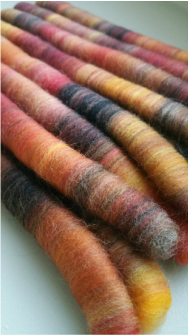 I am working on a new spindle challenge for myself. I have these wonderful rolags I got from Natually Knitty on Etsy and I am spinning one a night. As I mentioned on Facebook, I am using this time to unwind and relax after a long day of work. I have 5.5 oz of fibre and it will take me about a month to complete spinning all the rolags. The fibre content is Shetland, Merino, Falkland and Polwarth - what a great blend! I started out using one of my Glindles which I reviewed in this post, and I have 9 rolags spun on this spindle so far. 22 more to go.  I have been taking pictures every night and posting my progress on my Facebook page. Its hard sometimes because night pictures are never that great, so I thought I would post an weekly update on my blog here. At the end of spinning, I will 2 ply the singles and I'm not sure what I will do with the yarn ~ project wise. Probably a shawl :P I have been inspired by a couple people and their spinning to shawl projects.  Rolags are great to spin with, they are easy to transport and spin on the go as you can throw a couple in your spindle bag - no need to bring them all. They are easy to spin from and will create a nice woolen yarn. I found this spindle bag at the Fibre & Finery sale I participated in last November. It was made by Kathy Woodcock, who is well know in the city here for her unique hand stamped bags with flowers from her garden. She is a fellow guild member and an amazing weaver. Her bag fits my spindle and rolags perfectly. So far I am quite enjoying the process which is different for me as I am usually a product spinner. It feels nice to take it slow. What spindling projects are you working on? New handspun added to my Etsy Shop today. It is Shetland fibre, plied with Corriedale. Both these wools combined create a very versatile, durable yarn that would be awesome for outerwear like mitts, hats and sweaters. I quite like working with Shetland, and have added more if it to my fibre stash so be on the look out. 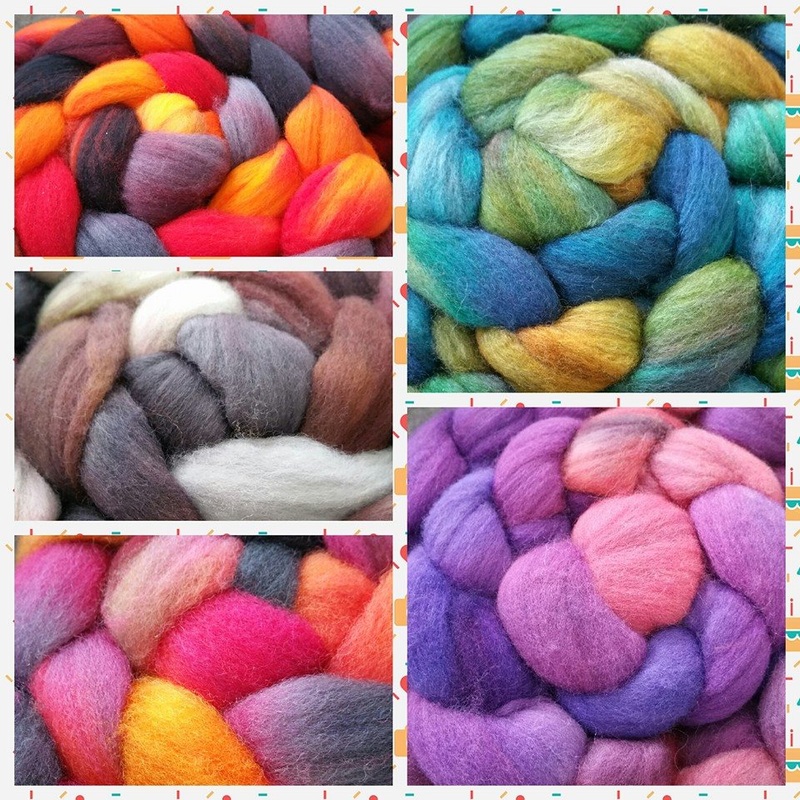 I also have these beautiful, vibrant braids which I purchased from my favourite dyer Kim, from The Wacky Windmill. I can't wait to spin these into yarns as see what they become :D My friend Michele shared this video on Facebook today and I loved it so much I thought I would show you as well. It shows the journey wool takes from fleece to finish made by The Woolmark Company. They did a lovely job. Let's be honest, I had been counting down the days until this years' Manitoba Fibre Festival. Last year was so wonderful, I was anticipating another great day and I was not dissapointed. The festival was such a success in its first year that this time, they needed A LOT more space. There were several more vendors and so many interesting workshops that they expanded the location over slightly to include the arena area of St Norbert Community Hall.  I was also excited for the wool show, as I was invited back to judge the fleeces. This year we had 17, so almost double from last year! The more the better and this also makes for a more interesting competition and class set-up. We had 4 classes - Fine, Medium, Long and Specialty. I saw Polypay, Corriedale, Suffolk, Dorset, Romney crosses and Shetland. A nice representation of breeds common in the prairies. It was also nice to see fleeces from producers from both Manitoba and Saskatchewan.
 Grand Champion and a First Place in the Fine Class was awarded to this Polypay fleece from Manitoba Producer Gerry Oliver with a score of 95.5%. You can see that she takes great pride in her wool and the quality of her fleeces and it shows. After the show, she even told me that she was up into the wee hours the night before, making sure her fleeces were perfectly skirted and looking their best. Well worth the effort. Congrats Gerry! The Shetland fleeces were also gorgeous, the colour ranges in that breed are lovely and the fleeces themselves were tip top. Janet from Qu'Appelle was also at the festival, attending workshops and even entered fleeces which placed first and second. It was quite nice to see so many people from Saskatchewan attending the festival this year.  I was in the perfect location to snag a beautiful Capar tiny turkish spindle that was calling my name! It's made from Olivewood and Walnut. I must be crazy because I'm not a big turkish fan, and the little, teeny tiny ones just make no sense to me yet, I couldn't stop looking at it. They have an Etsy shop, I don't think this will be my only purchase from them. Keep an eye out for a spindle review on this one in the future. There were also lots of demonstrations in weaving, machine knitting, spinning, and net making. You could have also brought your wheel and joined in with the spin-a-long that was happening. There was a book signing with Carol James - who is well known in the art of Sprang and finger weaving. I purchased a couple of her books at Olds a couple years ago. Her personality is so addictive, I promise that you will be so amazed with both her and her work, you will want her to come teach a workshop in your area. Joanne Seiff, who is also one of the coordinators of the Manitoba Fibre Festival, had a couple books that I was very interested in; Knit Green and Fiber Gathering. She signed both for me and I have already delved into them and flagged several of the projects to knit for myself. I also love how both are somewhat reference books in the fact that they are chalk full of useful information and you can tell she has done her research. I highly recommend both, they would be a wonderful addition to your library.  I appreciated that Jeremy ran my booth for me during the entire day. He even said that he had a great time talking to people and sharing all the enthusiasm and passion for fibre arts that everyone bonded over. Congrats to both Margaret and Joanne for another successful festival! Can't wait to see everyone again in 2015 and thanks so much for those who came out! I have updated the shop with some more handspun as well as different Spinner Starter Kit Fibres. I will be taking everything with me to Saskatoon next weekend for the first Etsy Made in Canada Day. Its a really cool idea for people who have Etsy shops. On Saturday Sept 27th, there will be pop-up shops happenening all over Canada and I will be participating. If you are in the Saskatoon area, come see my yarns and handmade items up close. I will be at Le Relais (103 - 308 4th Ave N) from 10 - 5. Hope to see you there!
This week's fibre is Superwash BFL. You can depend on this yarn regardless of what project you plan on making. BFL is one of my favourites. Click the above picture to be taken to the listing Today's Fibre Update is for a super soft skein of Polwarth. It's called Scheherazade because the colours are rich and exotic much like the stories she told. Click the above picture to be taken to the listing for more details. So you found an amazing fleece at a wool auction or fibre festival, awesome! Sometimes processing a fleece can be daunting but it doesn't have to be. It is very rewarding to work a project from start to finish. Some times your fibre can be pretty rank when it's full of - sweat, lanolin, manure, dirt and vegetable matter. The first thing you should think about doing is washing your fibre. In this tutorial, I will show you how I wash my fleeces.  To start, gather all your necessities: - Thermometer - Laundry Bag - Wool Wash - Fibre Spinner (aka salad spinner) - Raw Wool - Sink/bath tub/basin  The fibre I am washing is from a Babydoll Southdown sheep. If you can see a fair bit of vegetable matter (VM) in your fleece, give it a shake outside to get rid of as much of it as you can. For wool wash, you will want something specific to your needs. Dawn works great because it cuts through grease and it is easy to find and fairly inexpensive. I use Pour Scour because it works amazingly well and it is made especially for dirty, raw fibre and washing is a breeze. Laundry bags help keep your fleece together while still letting the water and wool wash flow through your fibres. You can find these bags at the dollar store and they come in many sizes. They also make it easier when you are lifting your fleece out of the water, you can grab the bag and not handle the fleece as much. Washing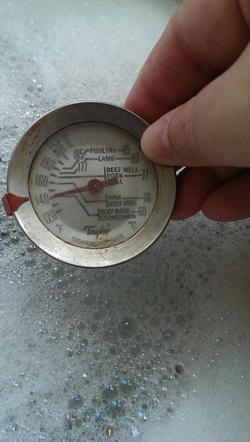 For your first wash, fill your sink or basin with very hot water. Ideally, to melt lanolin and other waxes you will want you water between 140 - 160F (60 - 70C). This is where your thermometer will come in handy. Add your wool wash. Follow the instructions for your particular wool wash. Power Scour suggests 5% of your fibre weight should be added to the initial bath. You will want your sink filled with enough water that your fleece will be covered and have room to float freely. Since my sample is small, I will be using the strainer that comes with my spinner which makes it super easy to lift out of the water and drain. Place your laundry bag (or strainer) in the water and let it sink on its own. Try to handle your fleece (especially when wet) as little as possible. Felting occurs when you mix heat, soap and agitation, so be careful.  Let your fibre soak for about 20 minutes. You don't want the water to cool down too much between washes and you don't want to shock your fibres with dramatically different temperatures. Lift out your laundry bag or basket and let gravity help the water flow out. I gave mine a spin to get rid of as much as I could without squeezing the fibre. For my second bath, I want to use the same temperature water as I did in my first wash. 140 - 160F but this time slightly less soap (3% instead of 5%) I got my second bath ready just before my first bath was finished. Put your fibre in your new water and let it sink down. Wait for another 20 or so minutes. This time lets the wool wash do its magic, reducing tangles, cleaning your fibre and dissolving any solid matter like lanolin and other gunk that gets caught in the locks. 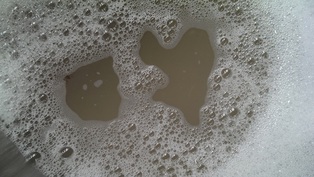 Lift your fibre out of the water after its soak. You will see that your water is less dirty than your first wash. Excellent! Two washes is usually enough. We will be rinsing next and once you spin your yarn, you will be washing your skein and after you knit your project you will likely be washing your fibre again to block. Much of the VM will come out during the combing stage too. Two washes is usually enough but use your best judgement. Rinsing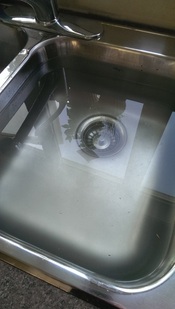 Let your fibre soak for 15 minutes or so and lift it out of the water. Rinse as many times as needed until your water is clear. As you can see this water is pretty clean. Perfect, looks like a good job! Lift out your rinsed fibre and give it a spin. Now you are ready to let it dry.  If you can do this outdoors your drying time will be cut in half. I rigged up a little drying rack using a laundry bag and some dowels in a frame that I set over my bathtub. I have since found a couple decent sized screens that work perfectly. Use what you have on hand. Open up your fleece as best as you can without handling the locks too much. Once your fleece is dry you are ready to comb, or card your fibre to prepare it for the yarn and project you have in mind. If you are washing a whole fleece at once, I suggest using your bath tub or a basin large enough to cover your wool. If you find it more manageable to section your fibre off and wash your fleece in small batches then that's perfectly fine too. Whatever is easiest for you and works with what you have in your home is the best option. If you aren't going to process your fleece soon after washing, store it in a plastic bag, and keep it in a cool, safe place away from pets and other curious critters. Hope you enjoyed this tutorial. This is the way I wash all my fleeces. If you have any questions just let me know. Maybe you have a tip or a hint that you use that makes washing your fleeces better, share it with me and I will add it to the notes with your name.  This was my third year attending the Grasslands Sheep & Wool Show in Drake, SK. I always have a really great time because the weather is always nice, the drive up is scenic, the pie and the sausage are worth the trip and the sheep are just too cute to miss. I enjoy seeing my friend Val Fiddler each year as she usually heads up the "Wool" portion of the show and I have been helping her out with both the wool show and promoting wool and its benefits to the sheep producers and the other people attending for the weekend.  Val was the wool judge this year and I was helping as her scribe and Wool Show Coordinator. We had 9 fleeces entered and saw several cross breeds and medium breeds common to Saskatchewan. My friend Janet whose farm I was at earlier this year had one of her Corriedale fleeces entered and won a second place ribbon! Click on the gallery below to see some pictures from the show. There is a lot to see an do in Drake besides the wool show, there is Sheep judging as well and you can purchase sheep on the last day of the exhibition. There is a Wine and Cheese on Friday night and a wonderful banquet on Saturday night. There are several vendors there as well and one particular fibre artist caught my attention. Arlette Seib from Watrous is a superb felter and her work was just - wow. The details she provides in her skies, the shading in a sheep's face and the colours are really quite eye catching. Jeremy and I met this handsome fellow when we arrived. Hamish is a Lincoln sheep and he was going home with Val. He was probably the most affectionate sheep I have encountered. He quite enjoyed the chin scratches, neck rubs and all the attention we were giving him. You should mark the Grasslands Sheep show on your calendar for next year. It's a great way to spend a weekend.
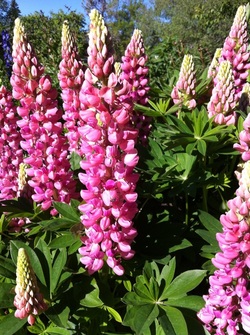 Wow, Fibre Week once again was a dream. I attended the whole week and it went without any problems at all. Lots of fun and I met lots of new, cool people and got to see smiling familiar faces too. Where do I start? I traveled with two amazing women; Deb Behm and Coleen Nimetz. Lucky me, because I got to converse with experts in the fibre field, learn and laugh all the way to Olds. Deb, taught Master Spinners Level 1 this year and had a very full class. She taught me how to spin and has been my mentor ever since. If you are looking to read up on her, you can check her blog and she also has an article on twist published in the most recent Ply magazine. Coleen, who usually teaches Level 6 and is one, if not the one, of the leading experts on silk in North America. She also has lots of recent articles published in several magazines including Ply, Spin-Off and more (check them out). 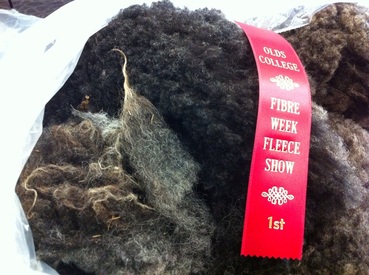 The first few days were spent getting settled and pouring over my books (and maybe checking the market). The Wool Show was on monday and I was getting very excited anticipating the whole thing. I judged 44 fleeces in several different classes. Since this is the 3rd year I have helped out or have been involved in the Wool Show, I had an idea of the types of breeds I would find there but cross breeds always force me to think just a little bit harder and there was one fleece in particular that made me laugh to myself because it was such a mix; it was a Romanov, Suffolk, Cotswold, Jacob cross. So, that means its a primitive breed, that is double coated, which also has characteristics of down breeds AND long wools. Yeah. It made the cogs in my head turn a little more then they are used to. It was a lovely fleece and it won a first place ribbon in its class. There were beautiful Shetland fleeces, Dorset, Corriedale, Jacob and BFL. Cotswold, Arcott, Suffolf, Tunis, Cheviot and crosses of each and every one in between. My friend Val Fiddler from Wooly Wool of the West and co-coordinator of the sheep show at The Grasslands Sheep Exhibition in Drake won Grand Champion for her BFL fleece! So if you are looking for some really good fleeces you know where to turn. She also has Black Welsh, Corriedale, Cotswold and more in her flock. There was a Cotswold fleece from Manitoba producer Gerry Oliver, that was absolutely stunning. It scored only a one mark less than the BFL pictured above. When I flipped the fleece over to look at its lustre, the people in the audience gasped at its shine! Below is a gallery of pictures from the show and the auction. Sorry about the poor quality of some of them, the fluorescent lighting in the building wasn't ideal for photos. The auction is always a very stressful time. My hands were shaking by the end of it and I wasn't even bidding on anything! You can see the love for fibre right here and I did enjoy seeing some very excited faces once the time was called.  Once the show was over I got to relax a bit. As some of you know, Kim from The Wacky Windmill and her lovely minion Donna were there. Two of my favourite people <3 I got to spend lots of time with them, especially Donna and I hovered around their booth for the majority of the time the market was open. I came home with a couple items; Alpaca/Merino/Silk in the "Kiss This" colourway, Merino/Cashmere/Silk "Remember That Time..." (luxury!) and a skein of superwash Merino in "The Hollow" colourway which I won in one of Kim's KAL's recently. I also coudn't go home without some Painted Desert yarn from Pam's Wooly Shoppe, a travel niddy noddy and some fabric from"The Quilting Bee" (in the town of Olds) which I have no clue what I will do with it. Every year students receive a fibre week tote, that is different every year. Donna also made me this lovely project bag which had a lavendar sachet and handmade lavendar soap inside! Have I ever mentioned how wonderful Donna is? I may have also come home with a Suffolk X fleece..... maybe I read an article about a spinning wheel collection donated to the Olds Museum and had to go check it out while I was there. Donna and I went and saw over 45 wheels that had belonged to a man who's goal was to open a museum with them. Among all the very unique and cool wheels were also over 20 drum carders, distaffs, mirrors, spinning wheel parts and also his anvil collection and other oddities. It is quite amazing all the different styles of wheels he had, in all shapes and sizes. Many of them still work including one that had been charred in a fire. There were a couple wheels on display during Fibre Week at the college. All of these wheels are being restored and photographed by a professional photographer and will be put up for auction in the very near future. Some of them are already being added to the museums website and if you are looking to purchase any of these wheels, you can find out all the information you need here. Click on the pictures in the gallery below to get a sneak peak on what wheels will be available.  As usual there are always social events in the evenings and I attended all of them. There was a pub night on Monday, Spin-in on Tuesday and the Fashion Show on Wednesday followed the Fleece and Silent Auctions. An item of Deb's that was in the show was her handspun/handkint cotton sweater which was featured in one of Kate Larson's articles in Spin-Off. Zach Webster, who is the new Program Co-ordinator even tried his hand at spinning during the Spin-In. Looks like he loved it. 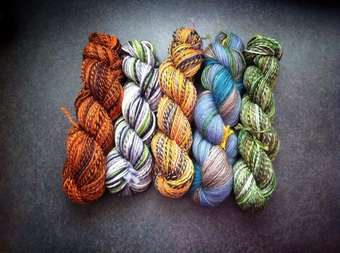 I did get my spinning projects finished while I was there. I spun 5 skeins; Shetland, SW Merino/Nylon, Corriedale, Romney and SW Merino/Cashmere/Nylon. I will be listing these skeins for sale in my shop if you are interested. And what would a blog post about Olds College be without several beautiful photos of the campus grounds? Enjoy  On the last day of Fibre Week, there was a plant sale. How could we say no? If you've ever thought about attending, I strongly suggest you come next year. Fibre Week 2015 will be June 19 - 26, see everyone again next year!! Looking for your daily dose of fibre? I know exactly where to turn. Kim from The Wacky Windmill was in Regina for the Regina Weavers & Spinners Guild monthly Fibre night (we are SO lucky). She brought with her a wonderful collection of hand-dyed yarns, fibre, notions, project bags and everything else a fibre artist needs. As I was helping put product on the tables I couldn't resist wanting to keep it all! Kim's good friend and awesome knitter Donna was there to enable (I mean answer questions) and she displayed some of her beautiful hand knit items made with Kim's yarn. 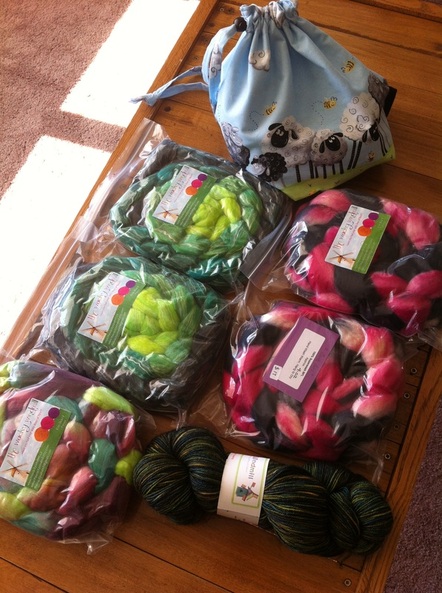 I managed to snag a few things that I couldn't live without. The yarn is destined to become a shawl, it's SW Merino/Stellina so it has a beautiful shimmer and all the best colours rolled into one. The two braids at the front are SW BFL in hot pink/black and white. The braid at the top left is Merino/Silk and apparently I bought fibre just like this a few years ago (obviously it's wonderful). The last two on the table are a past club colourway and my all time favourite in the luxurious blend of SW Merino/Sea Cell *sigh*. I <3 The Wacky Windmill. The project bag at the top of the photo is the perfect size and how could I not love: a) a bag b) a bag with sheep c) a bag with sheep that holds fibre?!  I spun this Falkland in the "Pot of Gold" colourway for Kim's SAL (Spin-a-long). This was the softest Falkland I have ever worked with. She is hosting another challenge this month and you can check her Ravelry group for more info The prizes are gorgeous!  While we were hanging out and spinning, I asked Kim a few questions (as an adoring fan) and thought others might be wondering some of the same things I was.
Where do you find inspiration? I find it all over the place; photos, nature, other dyers. I’ll notice color ideas on my way home from work or when I go snow boarding – there are lots of nice colour combos on the slopes. Sometimes I will also randomly grab containers and see what happens. How do you come up with colourway names? I sometimes ask other people around what they think the yarn or fibre looks like. We bounce ideas back and fourth. My husband doesn’t offer a whole lot but when he comes up with something it works well – like “Charred Oak”. Sometimes the names revolve around themes such as my silk yarn which is named after characters from the game Clue. “Tea Cup Elephant” was based on a dream I had. “Stow Away” was named because I found that braid among other fibre it didn’t belong with. What is your favourite colour? My favourite colour is green which may be why there is so much of it in the shop all the time. What other artistic hobbies do you do? I spin, knit, crochet, I’ve dabbled in weaving, I like to sew and quilt. I make soap, lotion and lip balm. I also like gardening, although I sometimes forget to water. I really enjoy renovating too. How has your work evolved since you started? When I first started dyeing I used Wilton dyes but they kept breaking and the colours sometimes ended up looking like mud. I was afraid of acid dyes – the name "acid" scared me, but when I used them for the first time and my hands didn’t burn off I realized how great they are. I have done a lot of research and looked into different fibres and how they appeal to people and take on colour. I have taught myself a lot about different ways to dye and have tried kettle dyeing, hand painting, dip dyeing, sprinkle dyeing and infusion. I like experimenting to try and get different effects. I am more adventurous than I used to be, and I will try mixing dyes to see how they turn out and will also try colour combinations that may not appeal to me but they do to others. I love seeing how each fibre artist adds their own techniques to my fibres, like in the club shipments, everyone comes up with a different way to spin or ply their yarns and come up with a unique end result.  What are your favourite fibres? To dye? I love the way Superwash Merino and Falkland take colour, but SW Merino is slippery when you rinse. To spin: BFL hands down. BFL and Merino plyed work really well together, the combination makes the yarn softer. What does your studio look like? Unfinished drywall, cement floors and poor lighting. I used to work in the kitchen but I have now moved downstairs. I have tables and a sink and stove down there, I need to work on the lighting but I have my own space now and it’s wooly. My rabbit Sunny is my dye buddy. Tell me about your pets: When I learned you can spin angora I found my first rabbit; Suzuki (Suzi) (3yrs) from a breeder in Vulcan. She is a French German Angora cross Red Eye White (REW). Gremlin is an English Angora Lop Cross rescue (received from the same breeder). We have fostered him for 2 years. His original owner passed away which caused him some health related stress issues, but he is a sweet boy. Sunny, which is short for Sunflower (1yr) is a French Lop Cross. She was a Christmas present and she is my biggest bunny. She loves to be held, pet and cuddled and really doesn’t like when she’s on my lap and I'm playing on my cell phone.  I also have 2 dogs; Boo who is 11 and Gracie who is 7. They are Maltese / Shih Tzu X's and are my sweethearts. I've had them both since they were puppies. Where can we see your work this year? May 3rd – Regina Weavers & Spinners Mini Retreat May 30th – Kings College HWSDA Conference June 13 & 14 – Fibre Arts Week in Pincher Creek June 23 – 27th – Olds Fibre Week Oct 4th & 5th – Knit City in Vancouver Watch for more updates throughout the year! Where can we find you online? ~ The Wacky Windmill group on Ravelry ~ Etsy ~ Twitter @TheWackyWindmill ~ Email Kim ~ The Wacky Windmill Website and Blog
I want to share my Wacky Windmill love with you too - I have a skein of TWW Getting Heavy in the colourway "Seriously Disturbed" to give one of you! It is 250 yards of soft, fluffy wool and one of my favourite yarn bases. To win, you must comment on this entry with shawl pattern recommendations - just kidding ;P just let me know what you would like to make with this yarn and what you love about Kim and The Wacky Windmill.
This giveaway will end on April 19th Congrats to Linda! Thanks to everyone who entered. Stay tuned for more giveaways. This unique spindle is cute and the workmanship that went into making it is clear Maker: Forrester Weight: 42 g / 1 1/2 oz Length: 12" Shaft 3" Whorl Style: Top Whorl Woods: Purpleheart, maple, hickory
Upon closer inspection, you can see that Thomas Forrester really enjoys his work. He pays close attention to detail (he even included lips on the sheep) and the carved lines are smooth and even. He creates neat shaping in both the crown ontop of the spindle and the whorl shapes. This spindle is very smooth with no rough edges.
 I have a list of goals this year: 1) knit a sweater for myself 2) crochet a sweater for myself 3) learn to sew 4) make a few projects that have been in my queue for a long time like Wurm, Hitchhiker and Sheep Heid, Morning Surf Scarf with handspun 5) challenge myself each month on something crafty 6) spin 4 oz on a supported spindle 7) Finish as many WIP’s as I can 8) Wear more of my hand knits on a regular basis I've started working on a few items and cast on for the Hitchhiker shawl this past week. I am using a Merino/Tencel blend which is the Jan 2014 club shipment from Spunky Eclectic. I spun the fibre straight from the braid without splitting it up. I wanted to have longer colour runs which of course "make" this shawl. The other nice thing about this pattern is you knit until your run out of yarn so I can use up every last inch of my precious handspun. I'm really liking the gradation of colours, looks like a sunset to me. It also makes for great work knitting.
This giant is what Jeremy refers to as "surprisingly photogenic" (hows that for a reason to buy) Maker: Greensleeves Weight: 64 g / 2 1/4 oz Length: 12" Shaft 4" Whorl Style: Top Whorl Woods: Unknown This spindle was on my "need" list for several years after seeing this on Marihana's stash page. My friend Susan noticed one for destash on Ravelry and I instantly jumped on it.  It is a very large spindle and quite heavy compared to my others. I have mostly been happy with Greensleeves spindles and this one seems... different. Not that its not pretty, its ok to be somewhat plain but the shaft on it seems to be.. ugly to say the least. Not that this plays a huge role but it just looks like a dowel to me. A lot of time and love was spent on the whorl though, its beautiful warm woods are a nice, dark, rich colour. The underbelly has been turned nicely (different from other Mjolinors I've seen online) and its got a nice shallow umbrella shape. There is only a single notch at the back of the hook, but it doesn't seem to be very big/deep to hold the yarns I would use for this type of spindle. And I should also mention that the main reason I wanted this spindle was for plying. I wanted a large spindle that could hold a full skein of yarn so I didn't have to make a couple smaller skeins. The fibre pictured is my Nov 2013 club shipment from North Bound Knitting. Cheviot wool in the colourway "The Talented Mr. Ripley"
This spindle would be much more suited to spinning long wools where you want less twist in your yarns. One plus for this spindle is the spin time is very long. You won't have to worry about it changing direction on you. This particular spindle has a bit of a wobble.  Spindle rating: Length of spin: 46.9 seconds (average of three tests) Fibre storage ability: VERY good Looks: Simple Overall Rating (as a plying spindle): 7/10 Don't ask me how to pronounce Mjolinor, it is one of Greensleeves Scandinavian style spindles and its design is based off a spindle found in Northern Europe in an archaeological dig. I will give this spindle another try later on when I have some larger skeins to ply. There is a lot of potential in this gentle giant. After you finish spinning a skein of yarn, it's important to set the twist. This helps the energy in your yarn relax and it also helps the yarn bloom which shows you how a finished object made with your yarn will behave after it is washed. You don't want any surprises to show up. 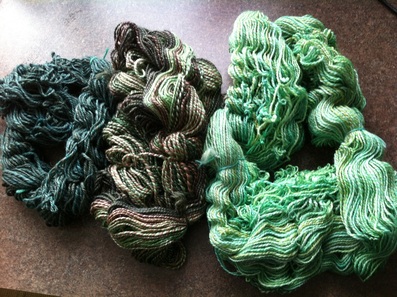 I started out with these 3 skeins. As you can see they still full of twist energy. I always overply my yarns and this is the result I end up with. (My very first skein of handspun yarn which I spindle spun and plied on a wheel was very "balanced looking" when I was finished, but when I went to knit with it, it was very underplyed = lesson learned). My samples are: Humbug Finnish, Merino/Silk and Finn wool. **Its very important to tie your skeins in at least 3 places. This prevents tangles and tears  Fill your basin/sink with warm water and a bit of Soak wash. Place your skeins in the water and gently submerge them to release any air bubbles. Make sure the skeins are completely wet. Let the water & wool wash flow through your fibres for at least 15 - 20 minutes. Now for the fun part - thwacking! I find this really helps my skeins relax and it releases a ton of built up energy. Take the damp skein out of the salad spinner and hold it with your arms outstretched. Bring your hands close together and then very quickly open your arms wide and your skein will make a slapping sound. I have demonstrated this step in this quick video: You can also hit your skein along the side of your tub or another hard surface.  Hang your skeins in a warm place to dry. *This step goes really fast if its nice and hot and you can hang these outside. You can see how much they have relaxed compared to the first photo. Now after all of this, I should also say, that your don't HAVE to do this. There are no spinning police. If you don't want to set the twist, that's fine, just keep in mind that your yarn will behave differently when working with it. If you want an energized yarn then perfect :) Let me know if you have any questions and happy spinning! This is a wonderful spindle that won't give up! Maker: IST Weight: 16 g / 5/8 oz Length: 8 1/4" Style: Top Whorl Woods: English Bog Oak/Elm & an Ash Shaft 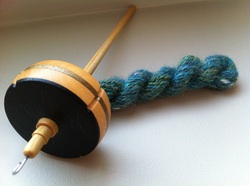 I fell in love with IST spindles a few years ago when I tried one out in my LYS. With just one flick these spindles will make it seem like your fibre is spinning on its own. They are nice and light and spin forever. I spun this textured batt sample on it and got about 14 yards. (I should also mention that each of the samples I spin for these reviews will be available for purchase in my Mini Skein section in the shop.)
 I really prefer rim weighted spindles because they have a much longer spin time and you don't have to worry about your spindle changing directions on you. Many IST spindles (like this one) have a brass/epoxy resin band around the whorl to give them some weight. It not only a beautiful feature but also a benefit in my opinion.
Spindle rating:
Length of spin: 23.3 seconds (average of three tests) Fibre storage ability: Good Looks: Beautiful Overall Rating: 9.5/10 I have many IST's in my collection and I haven't had any issues with any of them. If you are looking for a quality top whorl spindle ... look no further. Sturdy and hardworking are great words to describe this week's spindle Maker: Miss Lucy Weight: 37 g / 1 1/4 oz Length: 9 3/4" Style: Tibetan Woods: Zapote & Cherry  I bought this beauty in a destash on Ravelry and was first drawn to it because of its design and gorgeous woods. I really appreciate when a spindle maker adds their special touch and the detailing on the shaft is stunning. Once I started spinning with it I couldn't stop, it has such a long spin because of its shaping (it's rim weighted) and its perfectly balanced. The length also made it very comfortable to use.
Spindle rating:
Length of spin: 29.1 seconds (average of three tests) Fibre storage ability: Good Looks: Beautiful Overall Rating: 9/10 When you look at the spin time with this spindle compared to the Russian style spindle last week (29.1 seconds compared to 9.6 seconds), you can see how the extra weight and the shape of the base really makes a difference. If you get your hands on a Miss Lucy spindle, you won't regret it |
Follow Me:PatternsCategories
All
Archives
August 2023
|
















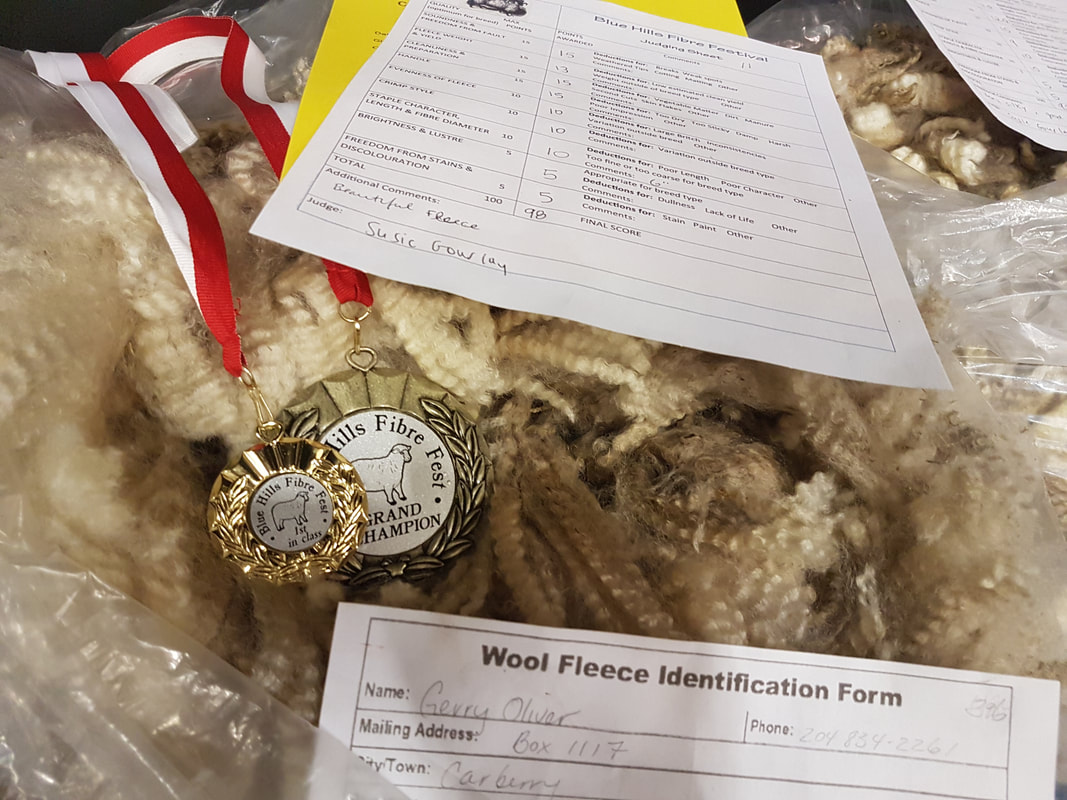


















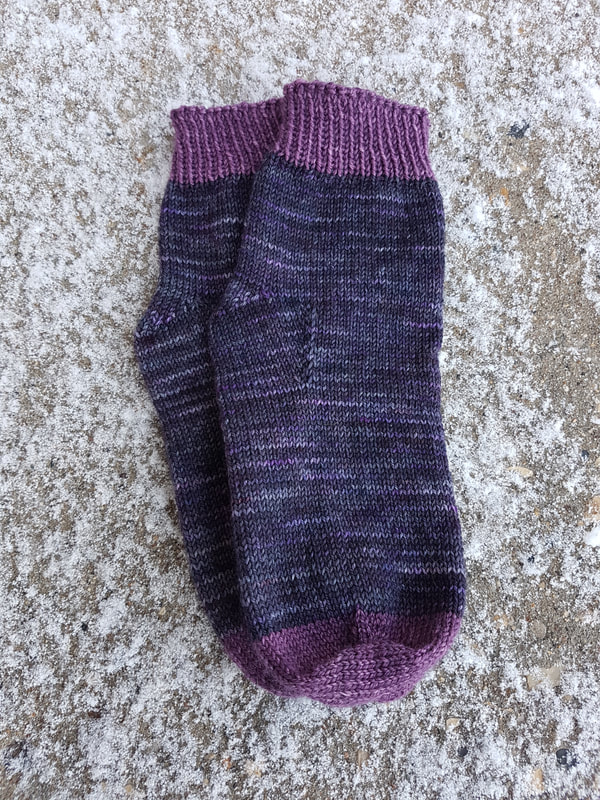



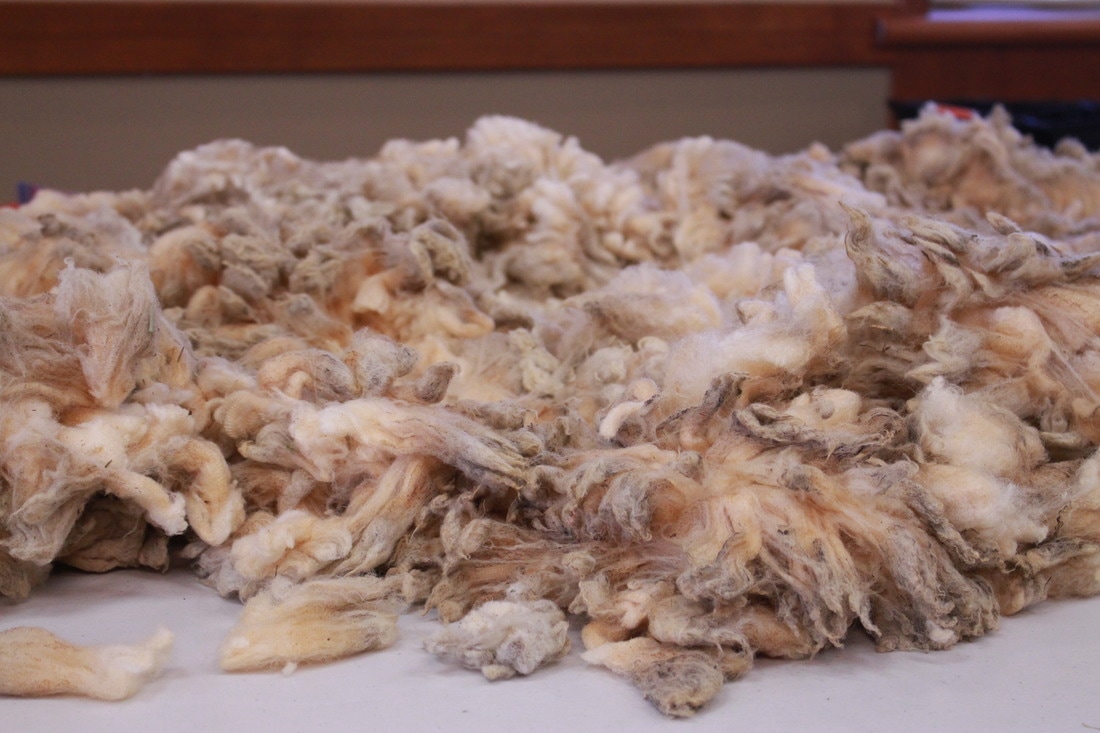





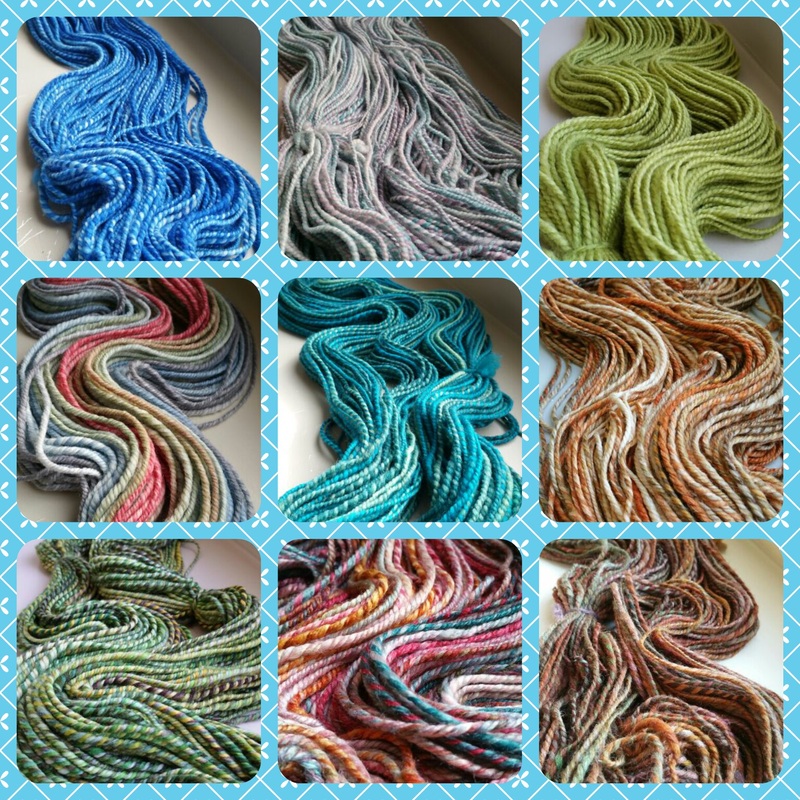

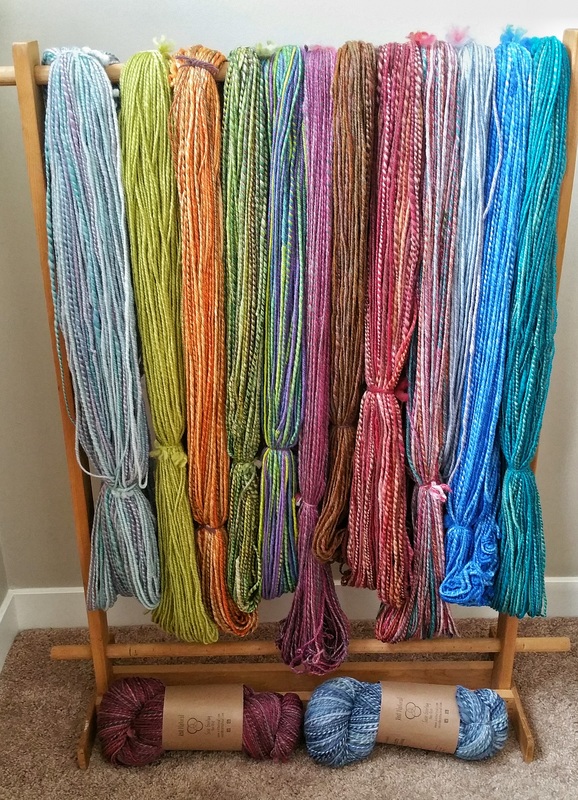








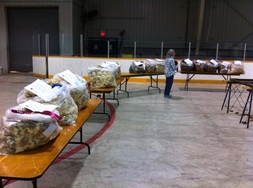








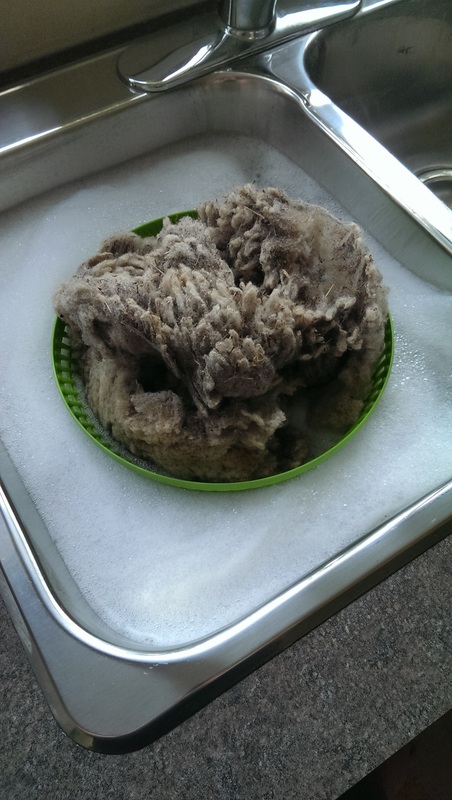














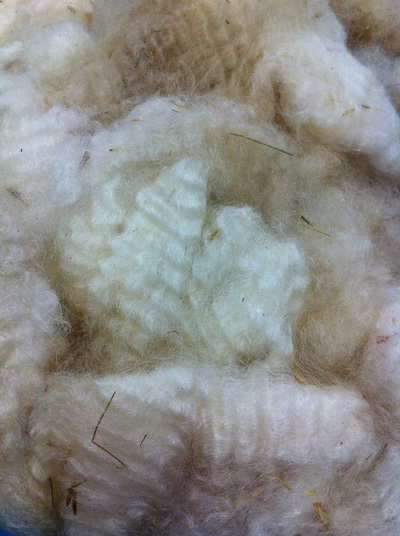








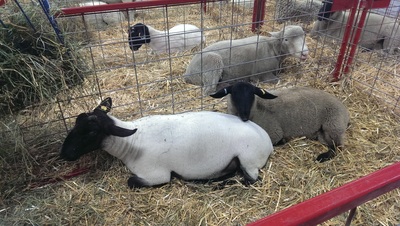
















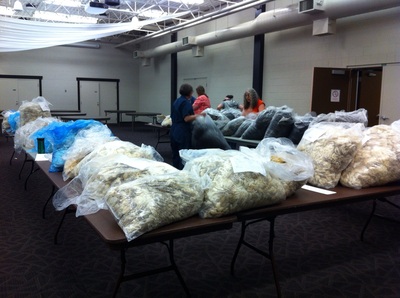






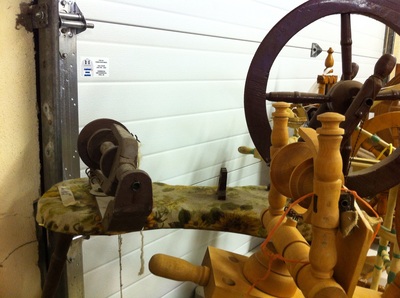


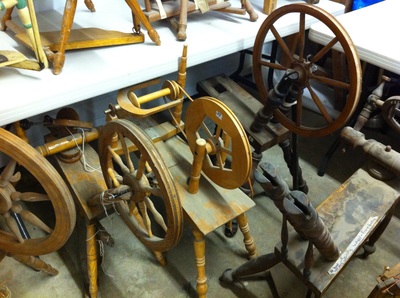
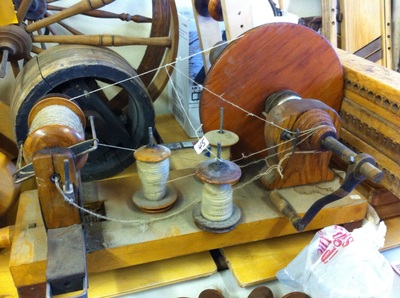

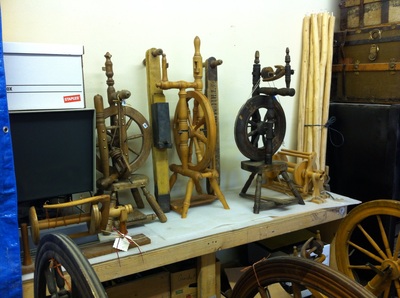










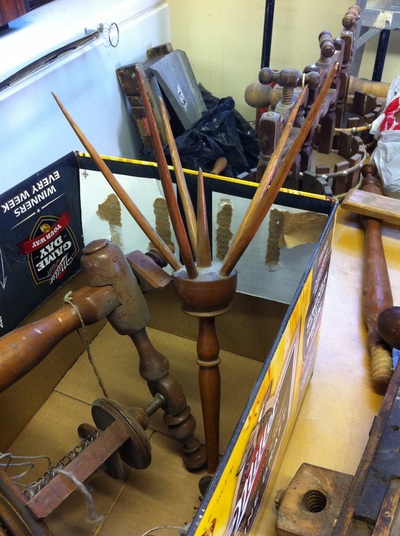



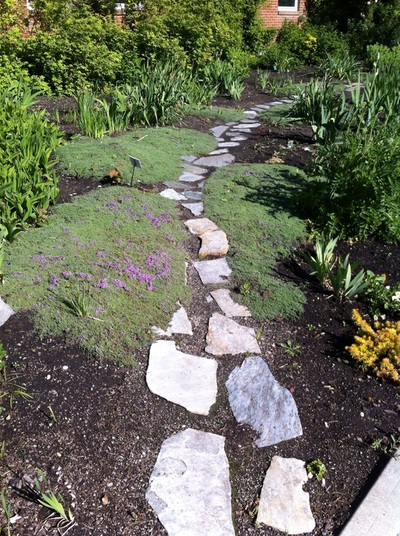







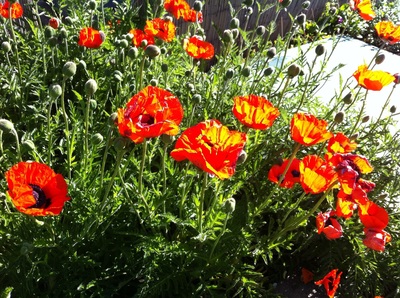






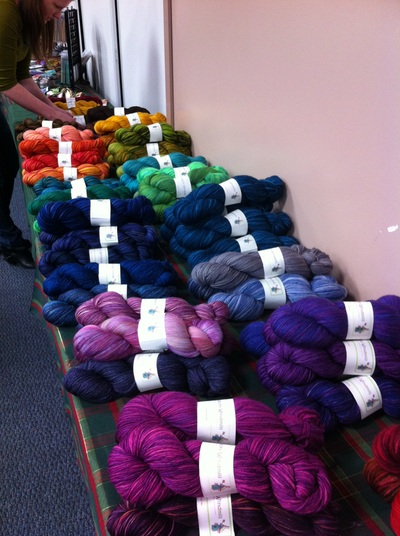



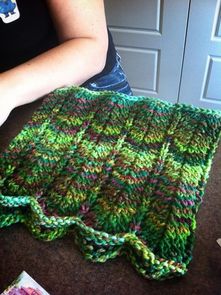




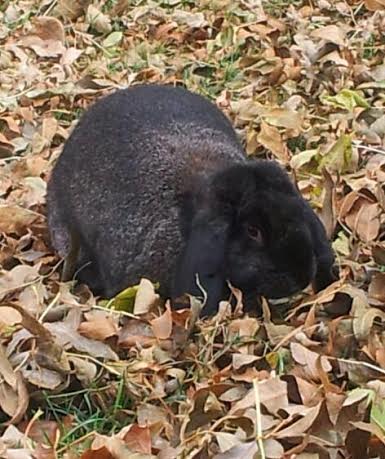
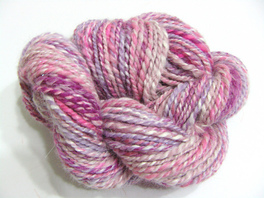






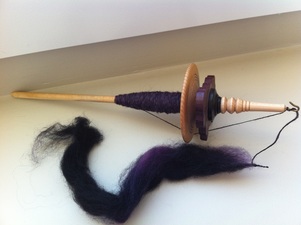
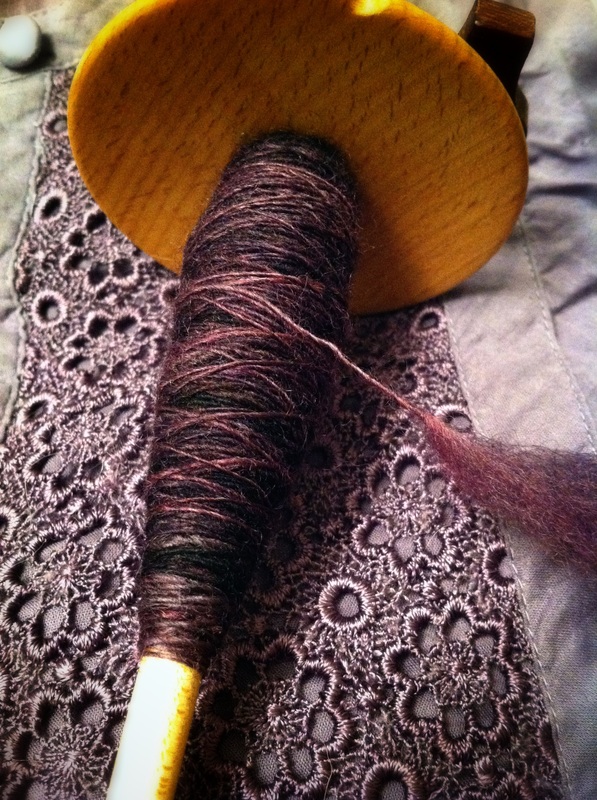
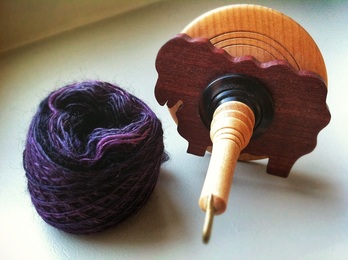


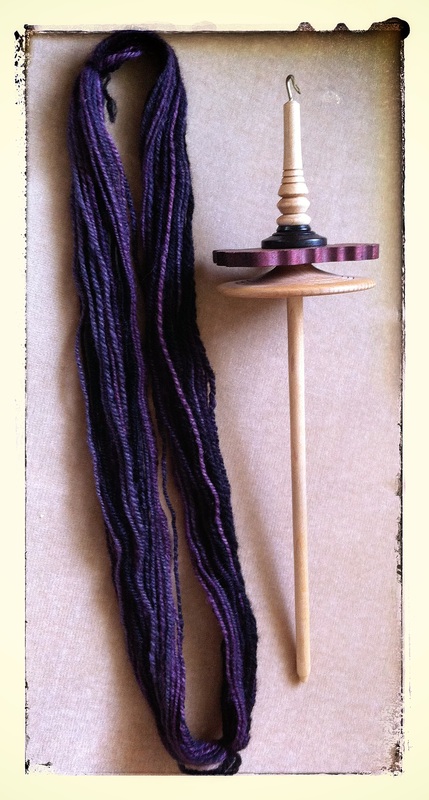

















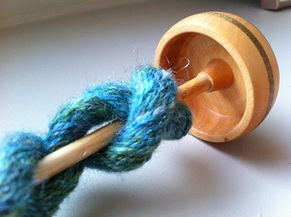


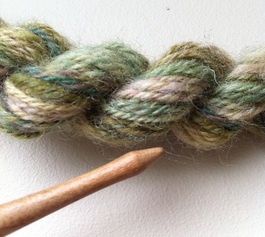








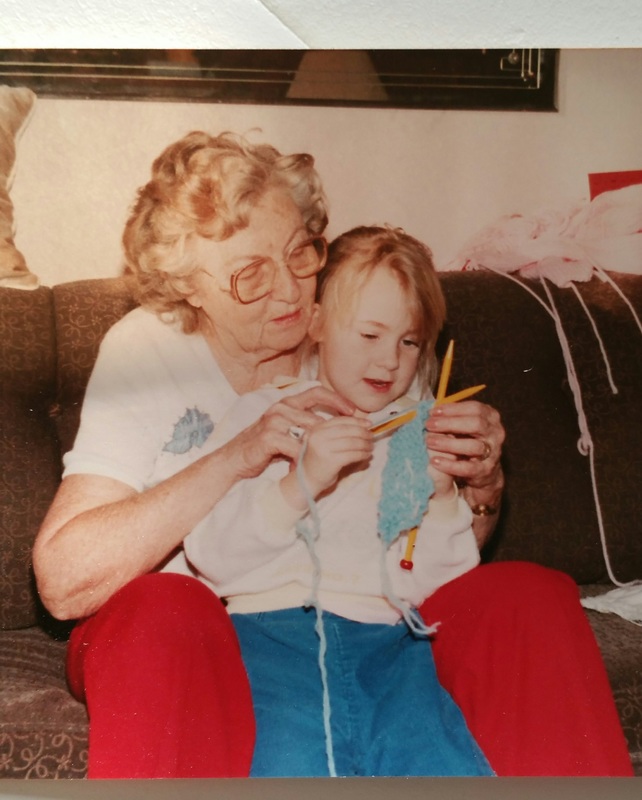





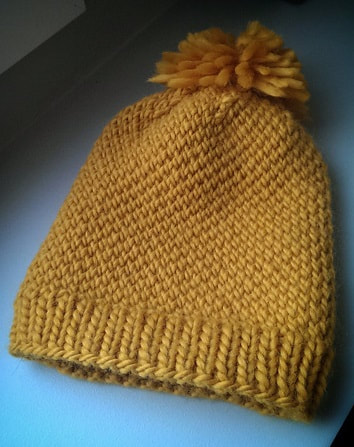

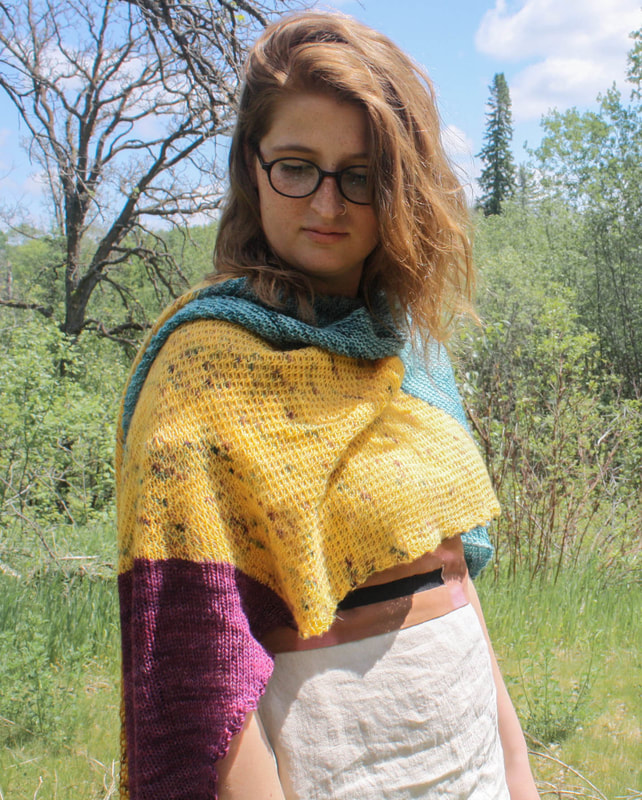
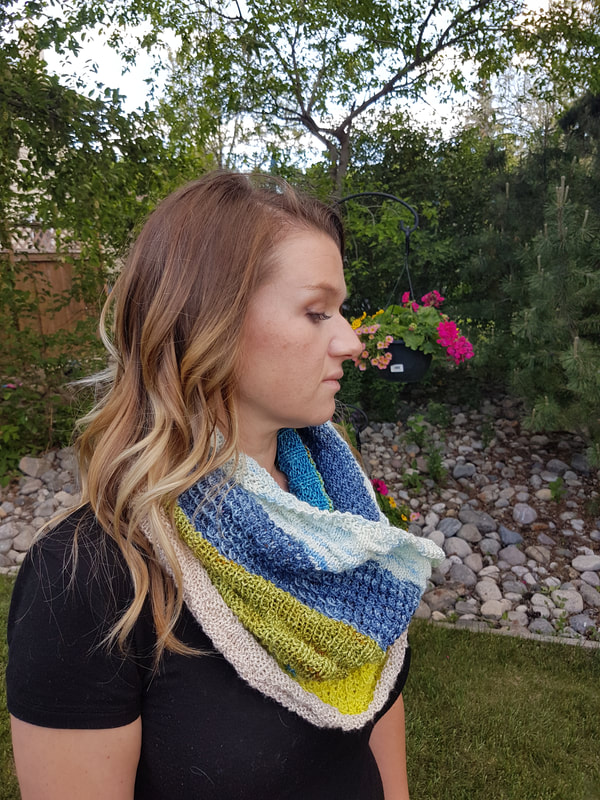







 RSS Feed
RSS Feed
